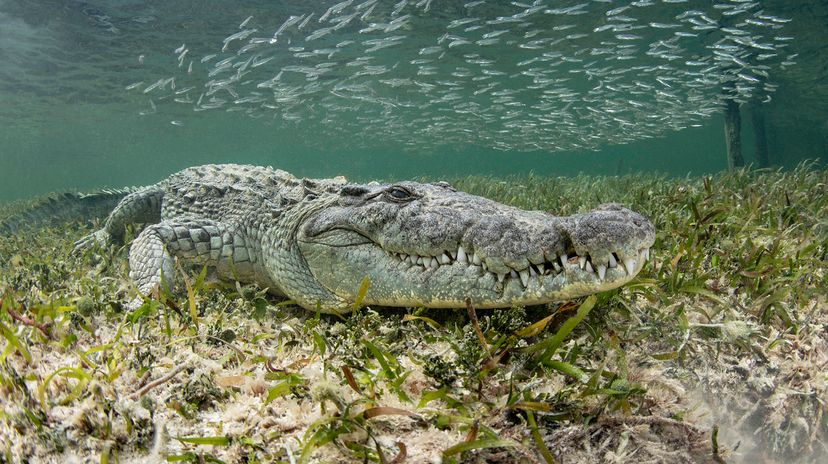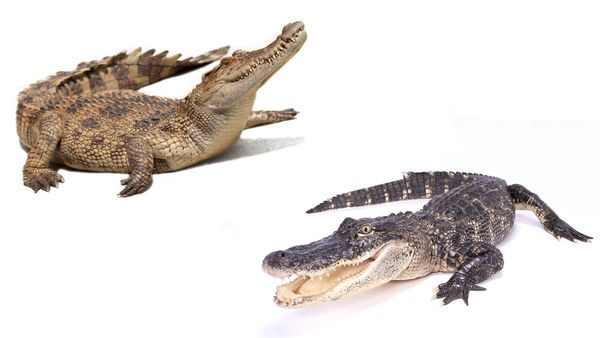Unlike living crocodiles, measuring extinct crocodiles can be difficult. "Estimating the body size of extinct crocodyliforms can be challenging, given the distinct body proportions of different subgroups, especially those phylogenetically distant from living crocodylians," according to researchers behind a 2022 study.
"Nevertheless, this issue is attenuated when skeletal measurements from extant crocodylians are used to estimate the body sizes of close extinct relatives, a practice that has been done by many studies, using different measurements to estimate body size (e.g. femoral length, vertebral measures, cranial width, orbito-dorsal cranial length, dorsal cranial length)."
Here are a few of the largest extinct crocodiles and their estimated size.
3. Mourasuchus
Despite its impressive size — the mourasuchus was an estimated 21.7 feet (6.6 meters) in length — this species likely did not handle large prey. This crocodylian had a flattened, duck-like skull and small teeth, meaning it likely didn't have the requisite bite force to take down bigger animals.
2. Sarcosuchus imperator
This giant reptile lived during the Cretaceous period in Africa. Based on fossil evidence, scientists estimate the croc was 11 to 12 meters (36 to 39 feet) long and weighed about 8 metric tons (8.8 U.S. tons).
These giant crocodiles had elongated powerful jaws that could have helped them eat fish and dinosaurs. "They do seem to have been going after pretty much anything they could," says Dr. Mark Young, an expert in vertebrate paleontology, to the BBC.
"By the time they reached their maximum body size, they probably would have been a predator of anything," he continued. "It's not really clear if they were capable of lunging out of the water and grabbing a dinosaur or if they just stuck to grabbing large fish in the rivers. It's possible once they reached really large body size, they could have done both."
1. Purussaurus brasiliensis
The middle to late Miocene era brought the Purussaurus brasiliensis, a crocodylian based in South America. Researchers estimate that it reached 41 feet (12.5 meters) in length, weighed about 8.4 metric tons and had no competition:
"The extreme size and strength reached by this animal seems to have allowed it to include a wide range of prey in its diet, making it a top predator in its ecosystem. As an adult, it would have preyed upon large to very large vertebrates, and, being unmatched by any other carnivore, it avoided competition."


